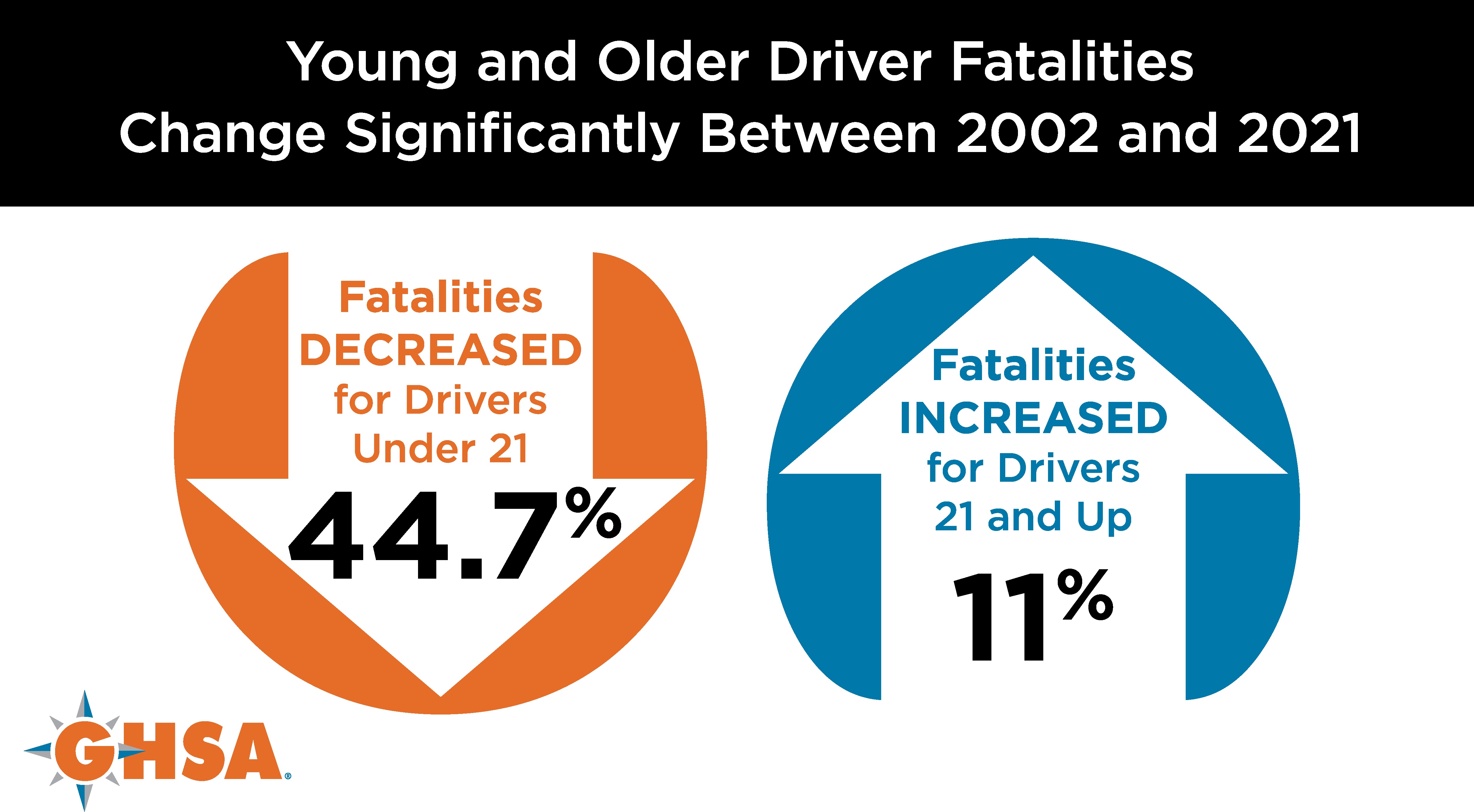Teens & Novice Drivers


Teen and new driver inexperience, coupled with immaturity, often results in risk-taking behaviors such as speeding, alcohol use and not wearing a seat belt — all of which contribute to an increased death rate.
Young drivers are nearly four times more likely to be involved in a fatal traffic crash than their older counterparts. Despite that disparity, research conducted by GHSA found that crash and fatality rates for drivers under 21 have improved drastically between 2002 and 2021 – more so than for other drivers (Young Drivers and Traffic Fatalities: 20 Years of Progress on the Road to Zero, GHSA).
The analysis found that fatal crashes involving a young driver fell 38%, while they increased nearly 8% for drivers 21 and older. At the same time, deaths of young drivers fell about 45%, compared to an 11% increase in fatalities for older drivers. Young people are less likely to drive today than they were 20 years ago, but this accounts for only a small portion of the large decreases.
Parents play a key role in helping teens become good drivers. Parents should not rely solely on driver education classes to teach good driving habits and should restrict night driving, restrict the numbers of passengers riding with their teen, supervise practice driving, always require use of seat belts and choose vehicles for safety, not image. Parents can also set a good example by practicing safe driving themselves.
To supplement driver education, GHSA and Ford Philanthropy developed Ford Driving Skills for Life (Ford DSFL), an innovative program that teaches newly licensed teens the necessary skills for safe driving beyond what they learn in standard driver education programs, creating safer roadways for not only themselves but everyone else on the road.
To keep teen drivers safer on the roads, all states have enacted Graduated Driver Licensing (GDL) laws that phase in driving privileges. GDL programs includes three stages:
Research has shown that significant reductions in deaths have been associated with GDL laws that included age requirements, a waiting period of at least three months before the intermediate stage, a restriction on nighttime driving, 30 or more hours of supervised driving and a restriction on carrying passengers or the number and age of passengers carried.
During the 1990s, many states began enacting GDL laws. The programs and types of restrictions vary from state to state. Below are some highlights:
NOTE: GHSA does not compile any additional data on GDL laws other than what is presented here. For more information, consult the appropriate State Highway Safety Office (SHSO).
Sources: Insurance Institute for Highway Safety and SHSOs.
Last updated in May 2024. Laws last reviewed by SHSOs in March 2024.
Over the past two decades, deaths of young drivers fell about 45%, while they increased 11% for drivers 21 and older.
